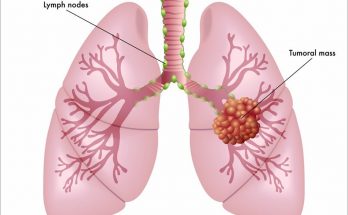End stage COPD, or stage four, is defined as having a forced expiratory volume that is below thirty percent. A patient will usually have occasional severe breathing issues, which will require a comprehensive care program that will consist of a number of medications and frequent oxygen usage in order to manage the disease. During the end stage of COPD a patient will usually have difficulty maintaining their weight, as their chest muscles work harder to breathe and even the task of eating can cause them to become winded. The patient may also be experiencing heart problems that are caused by a reduction of oxygen in the blood, in addition to the buildup of CO2. The end stage symptoms can also include severe edema, due to the damage done to the circulatory system, nausea, chronic cough, large amounts of mucus expelled when coughing and significant weight loss.
How to Manage Stage Four COPD: Taking Care of a Loved One
As breathing becomes more of a challenge for the individual, they will require more medications that are designed to open their airways. Most patients are on a variety of different meds, both long and short-acting.
At this point most patients will also be utilizing a form of oxygen therapy. The majority of patients will need supplemental oxygen, in order to keep their bodies functioning properly. Oxygen therapy can improve a person’s quality of life significantly and will result in an increase in overall energy.
If you’re taking care of someone who has stage four COPD, you will need to learn about the pros and cons of oxygen delivery systems and speak with the patient’s physician in order to obtain a referral for a social worker or pulmonary RN who will be able to explain in-depth the different types of oxygen systems that are available and help you to select one that will work best for the patient. You’ll also need to be trained on how to work the oxygen tanks, work the levels of airflow and learn how to change out tanks and reorder new supplies.
During stage four, may people with COPD will avoid most types of physical activity because it will trigger fatigue and shortness of breath, which can be both frightening and uncomfortable. In order to improve the strength of the lungs, staying active and exercising are crucial at this point for the patient.
How you can help a Loved One Who is suffering from COPD
In order to help your loved one remain active and strengthen their lungs, you can assist them when they are ambulating, with a walker and encourage small walks around the home. Many patients who are suffering from this advanced stage will find it easier to ambulate if they have a person they can lean on. Additionally, many rollators and walkers will have a built-in seat which can be utilized by the patient if they become too winded.
You can also purchase such exercise equipment as free weights and resistance bands and encourage and assist your loved one with exercising. If they are using oxygen, exercising in their own home can be less embarrassing for them and more convenient.
If their mobility is severely limited, you can speak with their physician in regards to getting them an electric scooter or wheelchair. There are several options these days, when it comes to medical equipment you can utilize for this disease and most health insurance companies will cover the cost as long as the physician provides written documentation that specific pieces of medical equipment are necessary in order to improve the patient’s quality of life.
